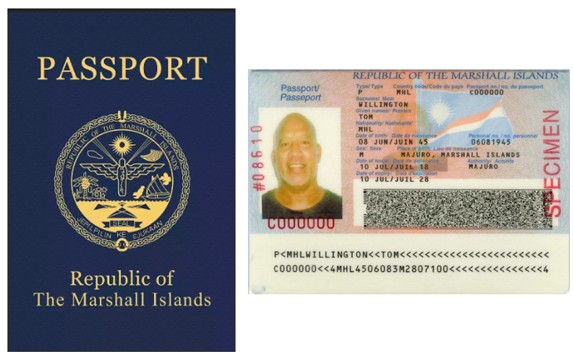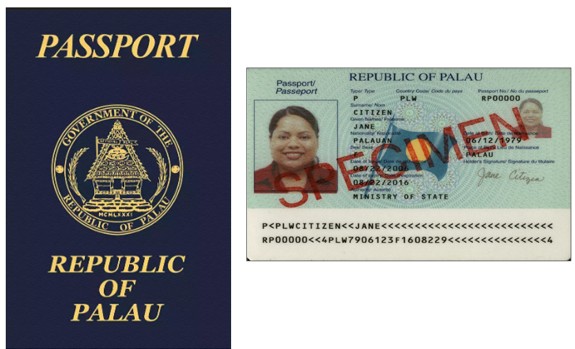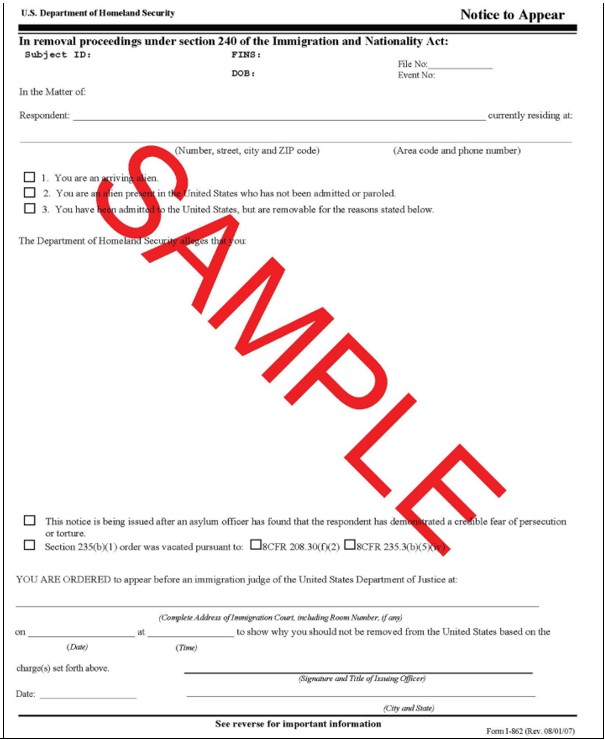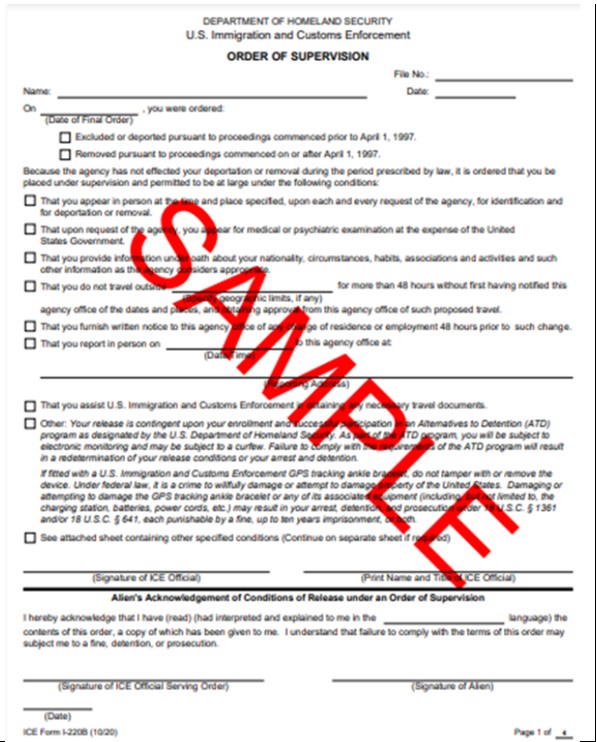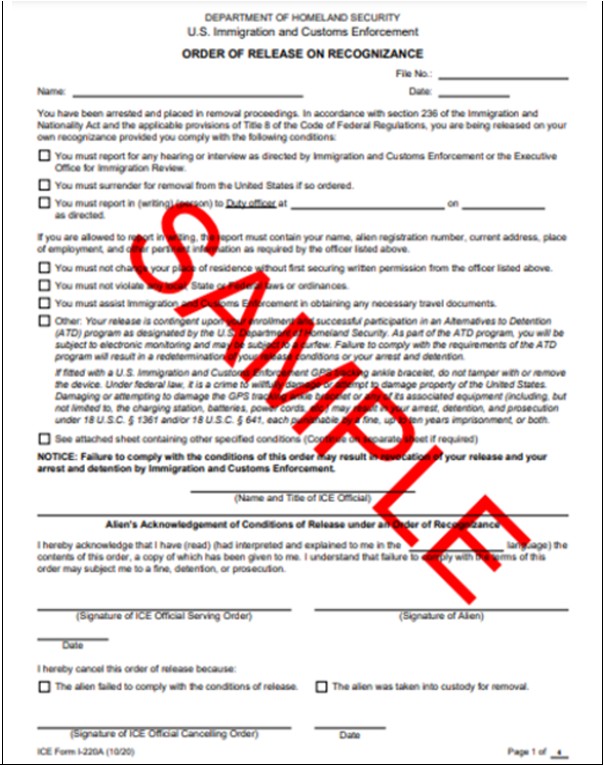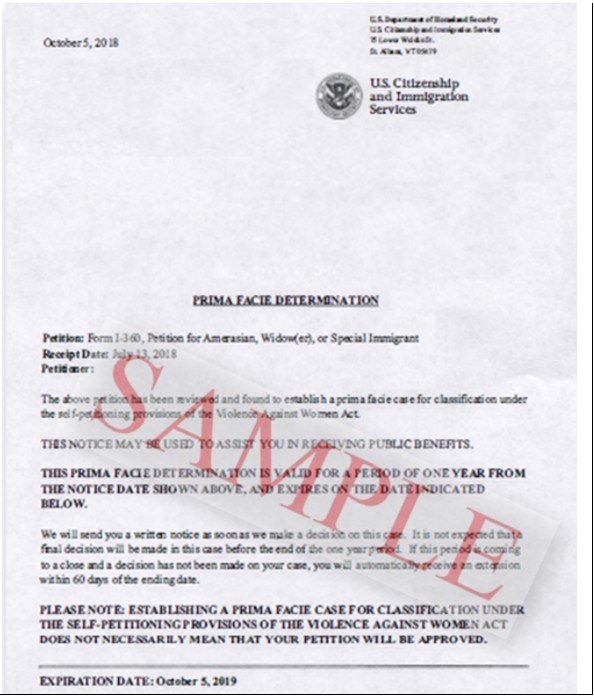Afghan Humanitarian Parolee (AHP)
Afghans who entered the U.S. lawfully based on an urgent humanitarian need and are paroled between July 31, 2021, and September 30, 2023.
Individuals paroled during this period who are approaching or have reached the end of their parole period may request an extension of their initial parole period from United States Citizenship and Immigration Services (USCIS), if they paroled with the “OAR” or “PAR” Class of Admission (COA).
Amerasian
A noncitizen individual born to a U.S. citizen father in Vietnam after January 1, 1962, and before January 1, 1976. Spouses, children, and parents or guardians may accompany the noncitizen to the U.S.
A noncitizen individual born to a U.S. citizen father in Korea, Vietnam, Laos, Kampuchea (Cambodia), or Thailand after December 31, 1950, and before October 22, 1982, who seeks admission to the U.S. and adjustment of status to LPR. Spouses, children, and parents or guardians may accompany the noncitizen to the U.S.
Asylee
A person in the U.S. or at a port of entry who is unable or unwilling to return to their country of nationality, or to seek the protection of that country because of persecution or a well-founded fear of persecution. Persecution or the fear thereof must be based on religion, nationality, membership in a particular social group or political opinion.
BenefitsCal
A website for applicants/participants to apply for, view, and renew benefits for health coverage, food, and cash assistance. The BenefitsCal portal also allows applicants/participants to upload supporting verification(s)/document(s) online.
Citizen
All persons born or naturalized in the U.S., and subject to the jurisdiction thereof, are citizens of the U.S. and of the state wherein they reside.
Conditional Entrant
A noncitizen individual who is granted conditional entry into the U.S. because of fear of persecution in their home country due to race, religion, political opinion, or natural disasters.
The provision of Public Law 89-236 for “Conditional Entrant” was the primary method of entry for refugees enacted in 1965 under Section 203(a)(7). This provision was abolished by the Refugee Act of 1980 when the government stopped using this status. While many conditional entrants have adjusted to LPR status, some retain their original status with this documentation.
Conditional Permanent Resident (CPR)
A person granted permanent resident status on a conditional basis (for example, a spouse of a U.S. citizen or an immigrant investor) who must petition to remove the conditions of their status before the second anniversary of the approval date of their conditional status.
Cuban/Haitian Entrant
Section 501(e) of the Refugee Education Assistance Act of 1980 defines the Cuban/Haitian Entrant as:
- An individual granted parole as a Cuban/Haitian Entrant (Status Pending) or any other special status subsequently established under the immigration laws for nationals of Cuba/Haiti, regardless of their status at the time assistance or services are provided; or
- A national of Cuba/Haiti who is not subject to a final, non-appealable and legally enforceable removal order, and:
- Was paroled into the U.S. and has not acquired any other status under the INA; or
- Is in removal proceedings under the INA; or
- Has an application for asylum pending with USCIS.
Cuban/Haitian Entrants are considered qualified noncitizens under the PRWORA of 1996.
Cuban, Haitian, Nicaraguan, and Venezuelan (CHNV) Parolee
Individuals from Cuba, Haiti, Nicaragua, and Venezuela who requested advance travel authorization to come to the U.S. and be considered for parole for urgent humanitarian reasons or significant public benefit. If approved, a qualifying individual can receive a temporary grant of parole for up to two years including employment authorization.
CHNV citizens and nationals can arrive under several immigration categories and may apply for a change of immigration status or category once inside the U.S.
COFA Citizens of the FSM, RMI, and Palau
The three COFA countries are collectively referred to as the “Freely Associated States.” COFA citizens of the FSM, RMI, and Palau lawfully residing in the U.S. are not citizens or nationals of the U.S.
Diplomats
Foreign government officials can travel to the U.S. to engage in official duties.
DOE
The date a person was admitted into the U.S. as a refugee, or the date asylum was granted. It is found on the I-94, letter granting asylum, an immigration order, or passport.
Note: The DOE is not found on the I-551 or I-766.
Hmong and Highland Laotians
Individuals lawfully residing in the U.S. who were members of the Hmong or Highland Laotian tribes that assisted the U.S. during the Vietnam War era. This category includes the spouse, surviving spouse that has not remarried, or unmarried dependent children of these individuals.
Humanitarian Parolee
A person who is paroled into the U.S. A grant of parole confers only temporary permission for inadmissible noncitizens to be present in the U.S., requiring parolees to leave when the conditions supporting their parole cease to exist. The humanitarian parole status does not confer immigration status and does not provide an independent path to lawful immigration status or permanent residency. However, a humanitarian parolee may be able to obtain lawful status in the U.S. by applying for asylum or other immigration statuses.
Individuals paroled under INA Section 212(d)(5) for at least one year are considered qualified noncitizens.
Note: Paroled for at least one year refers to the duration period listed on a parolee’s entry documentation and not the length of time the parolee has resided in the U.S.
Immigrant
Any person lawfully in the U.S. who is not a U.S. citizen, U.S. national, or person admitted under a nonimmigrant category as defined by the INA Section 101(a)(15).
Immigration Reform and Control Act (IRCA) Amnesty Program
An act of Congress passed into law to control and deter illegal immigration to the U.S. Its major provisions stipulate legalization of undocumented aliens who had been continuously unlawfully present since 1982, legalization of certain agricultural workers, sanctions for employers who knowingly hired undocumented workers and increased enforcement at U.S. borders.
LPR
Any person who is not a citizen of the U.S. but is living in the U.S. under legally recognized and lawfully recorded permanent residence as an immigrant. Also known as “permanent resident alien,” “resident alien permit holder,” and “Green Card holder.”
All LPRs are considered qualified noncitizens.
Noncitizen (also known as “alien”)
A person without U.S. citizenship or nationality (may include a stateless person). This term is synonymous with “foreign national” and with “alien” as defined in Section 101(a)(3) of the INA (8 U.S.C. 1101(a)(3)).
Noncitizen Without Sponsor(s)
A person lawfully admitted to the U.S. for permanent residence under immigration laws other than the family sponsored or certain employment sponsored categories and does not have sponsors of the type that incur a liability when the noncitizen obtains means-tested benefits. This group includes but not limited to:
- Refugees;
- Asylees;
- Persons granted withholding of deportation;
- Amerasians;
- Victims of human trafficking; and
- Special Immigrant Visa holders (e.g., Afghans, Iraqis, Cuban/Haitian Entrants).
While it is possible for these individuals to be sponsored by an organization, such as a church or nongovernmental organization, they are not sponsored on an I-864 and the organization does not have to sign a legally binding Affidavit of Support that would subject that noncitizen individual to deeming requirements.
Nonimmigrant
Any person who is not a U.S. citizen or national but is admitted into the U.S. on a temporary basis for a specific purpose under a nonimmigrant category as defined by the INA section 101(a)(15).
Non-Ukrainian Humanitarian Parolee (NUHP)
A person who last habitually resided in Ukraine and paroled into the U.S. between February 24, 2022, and September 30, 2024, (extended from the original end date of September 30, 2023), due to urgent humanitarian reasons or for significant public benefit. This category includes Unaccompanied Children (UC) and Unaccompanied Refugee Minor (URM).
North American Indian Born in Canada
Under the Jay Treaty of 1794, North American Indians born in Canada have the right to cross the U.S./Canada border freely, to visit, live, and work in the U.S. The U.S. grants permanent resident status to verified Canadian born North American Indians. These persons are not required to have USCIS documentation of permanent resident status and are not required to register with USCIS as a condition of GR eligibility. These individuals must:
- Possess at least 50% North American Indian blood; or
- Possess less than 50% Indian blood but entered and have maintained residency in the U.S. prior to December 24, 1952.
Office of Refugee Resettlement (ORR)
A federal program under the Administration for Children and Families, established by the U.S. Refugee Act of 1980. Its primary goal is to provide social services that help the following populations become self-sufficient as quickly as possible after their arrival in the U.S.:
- Refugees;
- Asylees;
- Cuban/Haitian Entrants;
- Special Immigrant Visa (SIV) holders;
- Amerasians;
- Afghan/Ukrainian Parolees; and
- Victims of human trafficking.
ORR Certification
Certification that allows adult victims of human trafficking who are not U.S. citizens or LPRs to be eligible to receive benefits and services under any federal program or activity to the same extent as a refugee.
Pending Petition
A petition that has been submitted to the USCIS and a final decision has not yet been provided.
Permanently Residing Under Color of Law (PRUCOL)
A status used by some U.S. federal and state programs to help determine eligibility for public benefits. It is used to describe certain noncitizens who may meet the immigration requirements for those programs. The definition of PRUCOL varies depending on the public benefit program the individual is applying for.
Note: The USCIS does not recognize PRUCOL as a valid immigration classification.
Prima Facie
The USCIS has determined that based on the face value of the evidence the case appears to be valid. A prima facie determination is an interim decision pending an approval/denial of the petition. Once the USCIS makes a prima facie determination, the battered noncitizen will receive a prima facie notice.
Qualified Noncitizens
A documented noncitizen entitled to reside in the U.S. permanently, or a noncitizen who has been granted temporary residence status under the IRCA of 1986. Qualified noncitizens are potentially eligible for GR.
Refugee
Any person outside their country of nationality who is unable or unwilling to return to that country because of persecution or a well-founded fear of persecution based on the person’s race, religion, nationality, membership in a particular social group, or political opinion.
RCA
A federally funded program through the ORR that provides cash assistance to qualified noncitizens who are not otherwise eligible for any other cash aid, including GR. These individuals include single adults who do not have children, married couples who do not have children, and families with children that do not meet the California Work Opportunity and Responsibility to Kids (CalWORKs) requirements.
The program provides social services that help the following populations become self-sufficient as quickly as possible after their arrival in the U.S.:
- Refugees;
- Asylees;
- Cuban/Haitian Entrants;
- SIV holders;
- Amerasians;
- Afghan/Ukrainian Parolees; and
- Victims of human trafficking.
The eligibility period for federally funded RCA was reduced from 12 months to four months, for individuals who applied for these benefits on or after May 5, 2025.
Refer to 69-200 Refugee Resettlement Program – Refugee Cash Assistance policy for detailed information.
Special Immigrant (SI) Conditional Permanent Resident (CPR)
An additional immigration status for Afghan arrivals who have an SI status under Section 602(b)(8) of the Afghan Allies Protection Act of 2009 but are yet to be deemed medically admissible. Once determined they are not medically inadmissible, USCIS may change their status to SI LPR.
SI LPR
A CPR becomes an LPR after the DHS removes the conditions on their LPR admission.
SIV Holder from Afghanistan and Iraq
Displaced Afghans/Iraqis who assisted the U.S. Armed Forces with translation and interpreter services were granted a visa before entering the U.S.
SIV for Employees of the U.S. Government Abroad
Foreign nationals (and their spouses and children) who are granted SIV due to:
- The foreign nationals have been employed by the U.S. government abroad for at least 15 years; and
- The U.S. Department of State has found that it is in the national interest to award the visas.
These individuals are considered as LPRs and are employment authorized.
Special Immigrant Parolee (SIP) with SQ/SI Categories
Individuals granted parole before entering the U.S. due to an emergency.
Sponsored Noncitizen
A person lawfully admitted to the U.S. for permanent residence through either:
- Family-based petition; or
- Employment-based petition.
Their sponsor (an individual, employer, or resettlement agency) has signed an I-864, Affidavit of Support, which is an agreement to financially support the immigrant.
SAVE
An electronic information sharing database administered by the USCIS that allows federal, state, and local benefit-granting agencies to verify an applicant/participant’s immigration status or naturalized/derived citizenship. SAVE will have information for individuals who have entered the country legally with a nonimmigrant status and a visa (e.g., a student or a tourist visa). However, undocumented individuals’ information will not be in SAVE.
Temporary Protected Status (TPS)
The secretary of the DHS may designate individuals from certain countries (or parts of countries), who are already in the U.S., for TPS due to conditions in that temporarily prevent the country’s nationals from returning safely, or in certain circumstances, where the country is unable to handle the return of its nationals adequately. Grants of TPS are initially made for periods of 6 to 18 months and may be extended.
TCVAP
A state-funded program that provides eligible noncitizen victims of a severe form of human trafficking, domestic violence, or other serious crimes, with services such as cash assistance, food benefits, employment, and supportive services.
State-funded benefits and services for TCVAP are equivalent to federally funded benefits available to refugees and certified victims of human trafficking, and applicants must meet all income, resource, and other program eligibility requirements.
State-funded benefits and services that TCVAP eligible individuals may qualify for include but are not limited to:
- TCVAP Cash Assistance (version of state funded RCA for single adults or families with no children);
- TCVAP CalWORKs;
- California Food Assistance Program;
- Cash Assistance Program for Immigrants (CAPI);
- In-Home Supportive Services;
- State-funded Medi-Cal, administered by the California Department of Health Care Services;
- Employment Services; and/or
- Supportive Services (childcare, transportation, and ancillary services).
The eligibility period for state-funded TCVAP Cash Assistance was reduced from 12 months to four months, for individuals who applied for these benefits on or after May 5, 2025.
Refer to 70-100 Trafficking and Crime Victims Assistance Program policy for detailed information.
T Nonimmigrant Status (T Visa)
A status that provides immigration protection to victims of human trafficking. The T Visa allows victims to remain in the U.S. and help law enforcement authorities in the investigation or prosecution of human trafficking cases.
Ukrainian Humanitarian Parolee (UHP)
Citizens or nationals of Ukraine paroled into the U.S. between February 24, 2022, and September 30, 2024, (extended from the original end date of September 30, 2023), due to “urgent” humanitarian reasons or for significant public benefit. This category also includes Unaccompanied Refugee Minor (URM) and Unaccompanied Child (UC) categories.
- UC: Prior to or instead of entering the URM Program, the unaccompanied minor may be placed in the UC Program (ORR custody) which provides care and placement for the UC pending release to families or sponsors rather than entering the URM Program.
- URM: Any citizen or national of Ukraine or other non-Ukrainian individuals who last habitually resided in Ukraine and is defined as an unaccompanied child. This includes a specialized foster care program to receive refugee services.
U Nonimmigrant Status (U Visa)
A status that provides immigration protection to crime victims who have suffered substantial mental or physical abuse as a result of the crime. The U Visa allows victims to remain in the U.S. and help law enforcement authorities in the investigation or prosecution of criminal activity.
USCIS
A federal department that is responsible for processing immigration and naturalization applications and establishing policies regarding immigration services, formerly known as Immigration and Naturalization Service.
Undocumented Noncitizen
A person who does not have acceptable verification from the USCIS of their legal immigration status.
Violence Against Women Act (VAWA)
Allows abused noncitizen spouse or child of a U.S. citizen or LPR to apply directly on their behalf, for lawful immigration status without the assistance of the abusive spouse or parent. Prior to VAWA, only a U.S. citizen or an LPR could petition the USCIS for their noncitizen spouse or children to become LPRs.
Withholding of Deportation/Cancellation of Removal
A specific type of relief that does not offer permanent protection or a path to permanent residence and can be granted by an U.S. immigration judge. A person who is granted withholding of deportation/cancellation of removal may never leave the U.S. without executing that removal order, cannot petition to bring family members to the U.S., and does not gain a path to citizenship.











